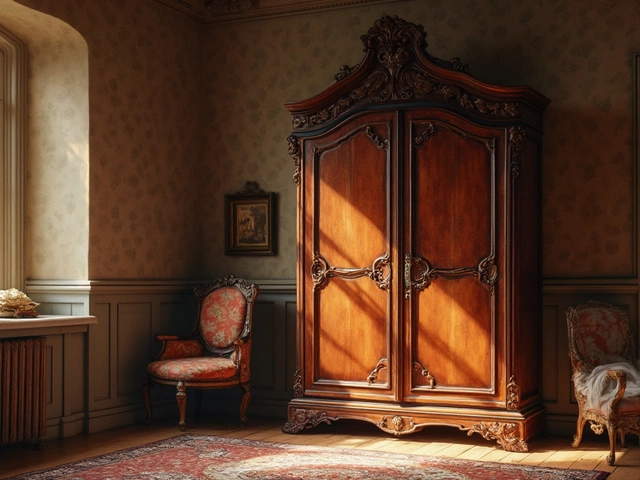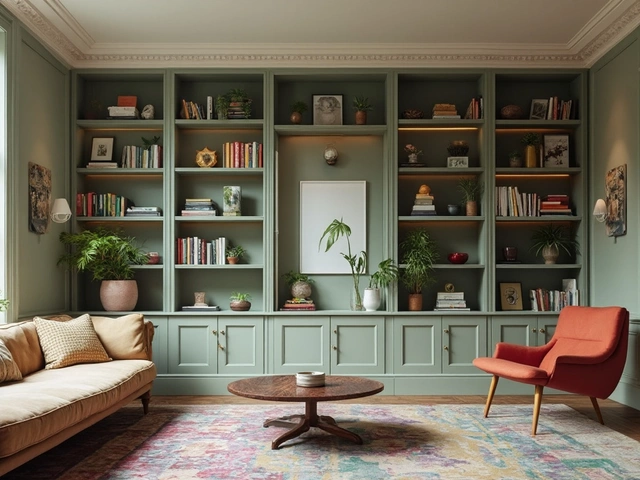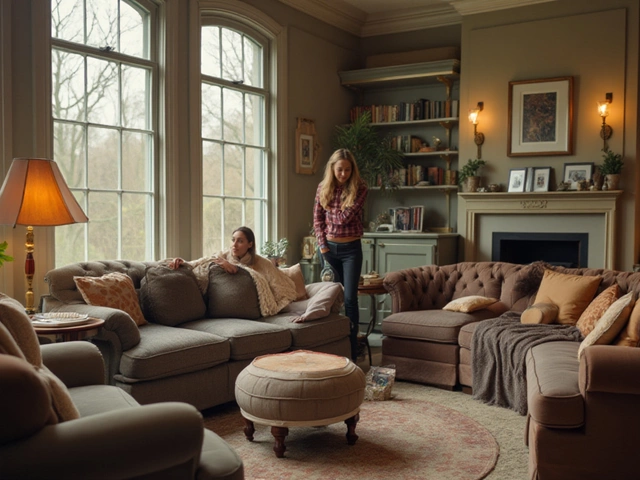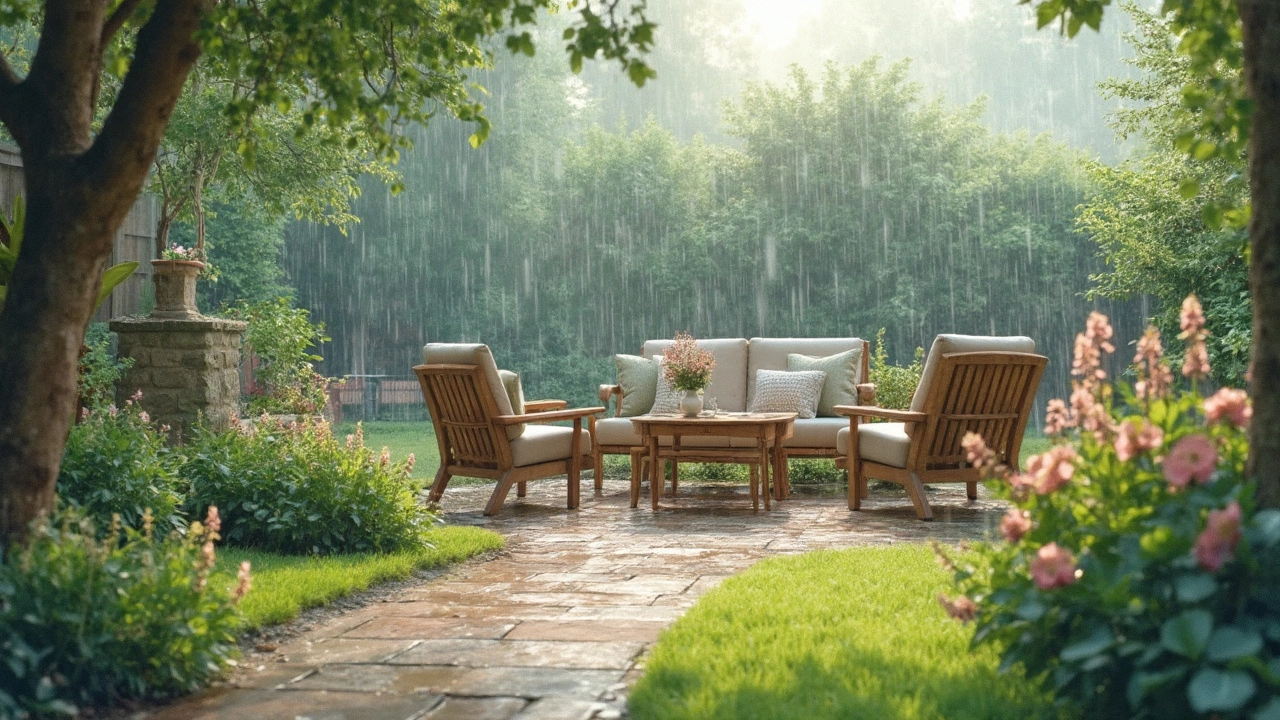 5
Apr,2025
5
Apr,2025
Picking the right material for your outdoor furniture is like picking the perfect outfit for a rainy day. You want something that looks great but also handles the wet weather like a champ. Not all materials are up to the task, especially if we're talking about Australia's sometimes surprising weather.
A good place to start is with teak. This golden-brown beauty isn’t just for looks—it's one of those rare woods that holds its own because of its natural oils. These oils make it super resistant to water, so it doesn’t warp or crack easily when it rains.
- Understanding the Importance of Material
- Teak: The Timeless Champion
- Aluminum: Lightweight and Durable
- Synthetic Wicker and Plastics: Modern Solutions
- Practical Tips for Maintenance
Understanding the Importance of Material
So, why all the fuss about picking the right material for outdoor furniture? Well, without the right materials, your outdoor oasis can quickly become a soggy mess. The material you choose not only needs to endure rain and moisture but should also stay looking sharp.
Many popular garden seating options out there aren't well-equipped for wet weather. Wood types like pine might look decent at first, but unless they're treated, they can soak up water like a sponge and start showing wear way faster than you'd like. That's why picking a more resistant material isn't just smart—it's necessary.
According to James Hughes, a leading outdoor furniture expert, "Choosing materials that offer durability and weather resistance ensures your investment lasts longer and maintains its look despite adverse conditions."
When it comes to moisture, weather-resistant materials like teak and aluminum get the most love. They're not just trendy; they naturally fend off the dampness that others fall victim to. Teak, for instance, has this incredible ability to repel moisture because of its natural oils.
And let's not sleep on metals. Aluminum's not just light—it doesn’t rust! Perfect if you're in a place where the rain rolls in often and unexpectedly. Even though it might be pricier upfront, you'll save in the long run without worrying about replacement costs.
Choosing the right rainproof furniture starts with knowledge, so let's gear up and protect that backyard of yours. Nobody needs a backyard bonanza turned boggy disaster, right?
Teak: The Timeless Champion
Teak is one of those golden choices for outdoor furniture that has been around for ages. There’s a good reason why people keep coming back to it, especially when it comes to dealing with rain and constant exposure to the elements.
First off, let's talk about durability. Teak is a hardwood, which means it’s naturally tough and can stand up to a lot of wear and tear. It’s got this built-in resistance to water, thanks to its natural oils and dense structure. Even when it rains cats and dogs, teak won’t warp, crack, or rot easily.
Now, you're probably wondering about maintenance. It's not as high-maintenance as you might think. Sure, you can oil it once in a while to maintain that rich color, but some folks actually love the greyish patina it develops over time. Either way, keeping it clean with a simple soap and water mix is often enough.
Teak also scores high for longevity. You invest in it once, and you’re set for a long time. Some teak furniture lasts decades with minimal fuss. Plus, its classic look never seems to go out of style, making it a smart choice if you want outdoor furniture that’s both functional and fashionable.
Here's a quick comparison table to show you why teak stands out:
| Feature | Teak | Other Woods |
|---|---|---|
| Water Resistance | Excellent | Moderate |
| Durability | High | Varies |
| Maintenance | Low | Varies |
| Lifespan | Very Long | Short to Medium |
Ultimately, if you're after rainproof furniture that can handle Melbourne weather without losing its charm, teak is your go-to material. It’s tough, timeless, and made to endure whatever Mother Nature throws at it.
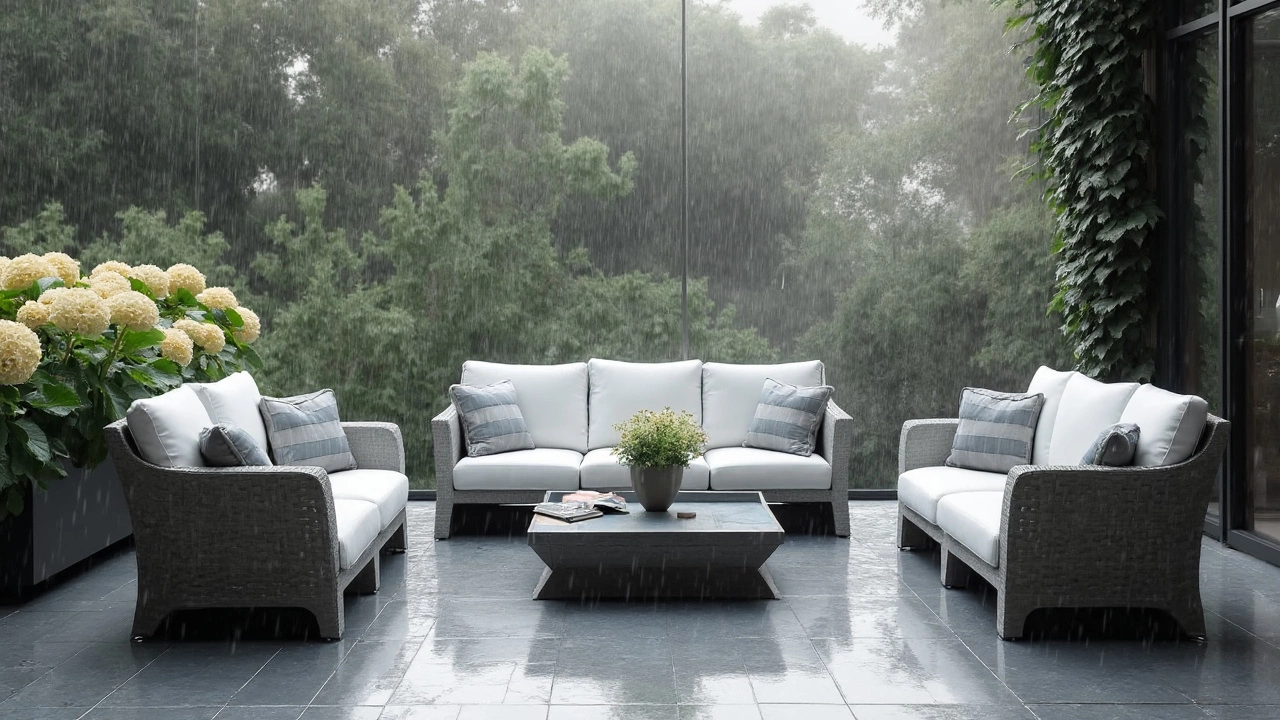
Aluminum: Lightweight and Durable
When it comes to outdoor furniture that can take a beating from the rain, aluminum is a winner. It's like that friend who's always up for anything and never breaks a sweat. One of the best things about aluminum is its surprising resilience against rust and corrosion, which makes it perfect for areas that get a lot of rain.
Aluminum's charm isn't just about being tough—it's also incredibly light. Moving it around your backyard or patio is a breeze. If you've ever tried to shift heavy furniture, you'll appreciate this feature instantly. Plus, it doesn’t need much in the way of upkeep. A quick wipe or a rinse with the hose, and you're usually good to go. Easy peasy.
"Aluminum furniture is a fantastic choice because it combines durability with a sleek modern look," says Charlotte Cole, a design expert from Garden Living Monthly.
While it doesn't rust, aluminum does oxidize. But instead of causing damage, this oxidation forms a protective layer that keeps your gear looking sharp for longer.
- **Rust-Resistant**: Aluminium is naturally rust-resistant, making it perfect for rainy climates.
- **Lightweight**: Easy to handle, move, and rearrange to your heart’s content.
- **Low Maintenance**: Typically requires just a simple wash to keep it looking new.
- **Affordable**: Compared to other materials, aluminum is reasonably priced, offering good value.
Some folks worry that light furniture might get knocked over by the wind. While aluminum is lightweight, many designs incorporate additional features like cushioned seats that help anchor them down. Alternatively, securing the furniture with ties or positioning it strategically in your garden can help mitigate any issues.
So, if you’re looking for rainproof furniture, aluminum should be a top contender on your list. It brings together functionality and style without the fuss, letting you enjoy your outdoor space no matter what the skies are up to.
Synthetic Wicker and Plastics: Modern Solutions
When it comes to outdoor furniture, synthetic wicker and plastics are like the new kids on the block who bring all the cool gadgets to play with. These materials are designed to handle the unpredictable weather, making them perfect buddies for your garden seating.
Synthetic wicker, unlike its natural counterpart, is made from materials like resin and PVC, which means it's not going to soak up water and start sprouting mold. This makes it an ideal choice if you’re looking for something that can just chill outside without constant attention. Plus, modern synthetic wicker looks so much like the real thing, your guests might not even notice the difference.
Now, let's talk about plastics. We're not just talking about any plastic, but high-density polyethylene (HDPE) and polypropylene. These are not only hardy and resistant to water damage, but they’re also eco-friendly as they can be recycled. A win-win if you're eco-conscious.
Both of these materials are pretty easy to maintain, which is fantastic news. A quick spray with the hose and some soapy water can keep them looking fresh as a daisy. Here’s a quick comparison:
| Material | Water-Resistance | Maintenance |
|---|---|---|
| Synthetic Wicker | High | Low, quick wash |
| HDPE Plastic | Very High | Minimal, hose down |
Choosing these materials means spending more time relaxing and less worrying about your furniture. Just toss on some colorful cushions, and you've got yourself a setup that's ready to impress any guest, rain or shine.
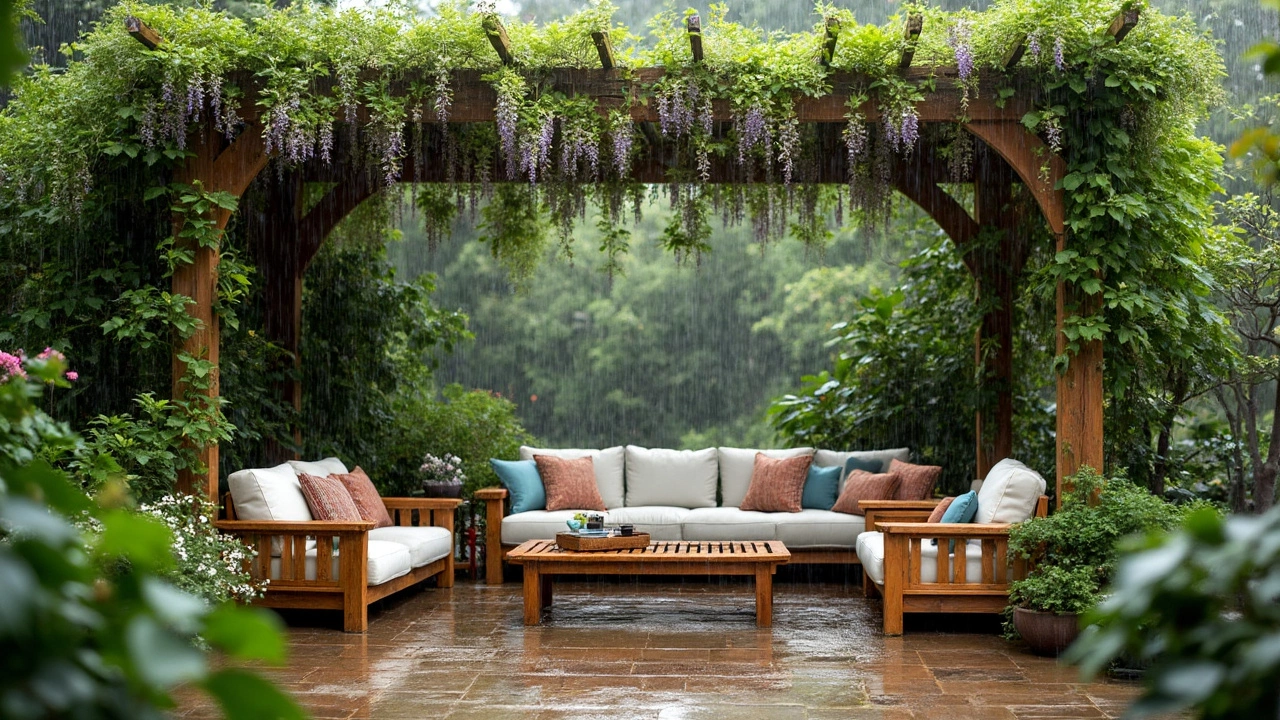
Practical Tips for Maintenance
Once you’ve got your hands on some top-notch outdoor furniture, the next step is knowing how to keep it in tip-top shape, especially in a country that keeps you guessing with its weather. Here are some straightforward tips to help your garden seating last longer, even when it's pouring.
First up, regular cleaning is key. For wood like teak, grab a soft bristle brush and a gentle cleaner. This removes dirt but keeps that beautiful natural finish intact. You might want to avoid pressure washers; they can be too harsh and damage the wood.
For metal furniture such as aluminum, a simple spray with mild soapy water and a rinse works wonders. Dry it off to prevent water spots. It’s also good to check for scratches and apply touch-up paint since scratches can lead to rust over time.
Now, if you’re dealing with synthetic wicker or plastics, a mix of water and dish soap will do the trick. Just let it air dry, which is usually enough. These materials are generally low fuss but keeping them clean enhances their longevity.
Using covers is a smart move, especially if you know a storm’s coming. They add an extra layer of protection and help reduce direct exposure to harsh elements. This means less maintenance in the long run.
Here's a handy table for a quick overview of cleaning tips for different materials:
| Material | Cleaning Method | Do's and Don'ts |
|---|---|---|
| Teak | Brush with gentle cleaner | Do: Oil occasionally, Don’t: Use pressure washers |
| Aluminum | Soap and water rinse | Do: Touch-up scratches, Don’t: Use harsh chemicals |
| Synthetic Wicker/Plastics | Dish soap and water | Do: Air dry, Don’t: Use abrasive tools |
Lastly, don’t forget about your cushioning. Nobody likes soggy cushions! Invest in water-resistant fabric or store them indoors when rain is on the horizon. This little effort makes them last way longer and keeps them comfy.
By sticking to these tips, your rainproof furniture will stay in great condition, ready for you to enjoy when the sun decides to come out and play again.


